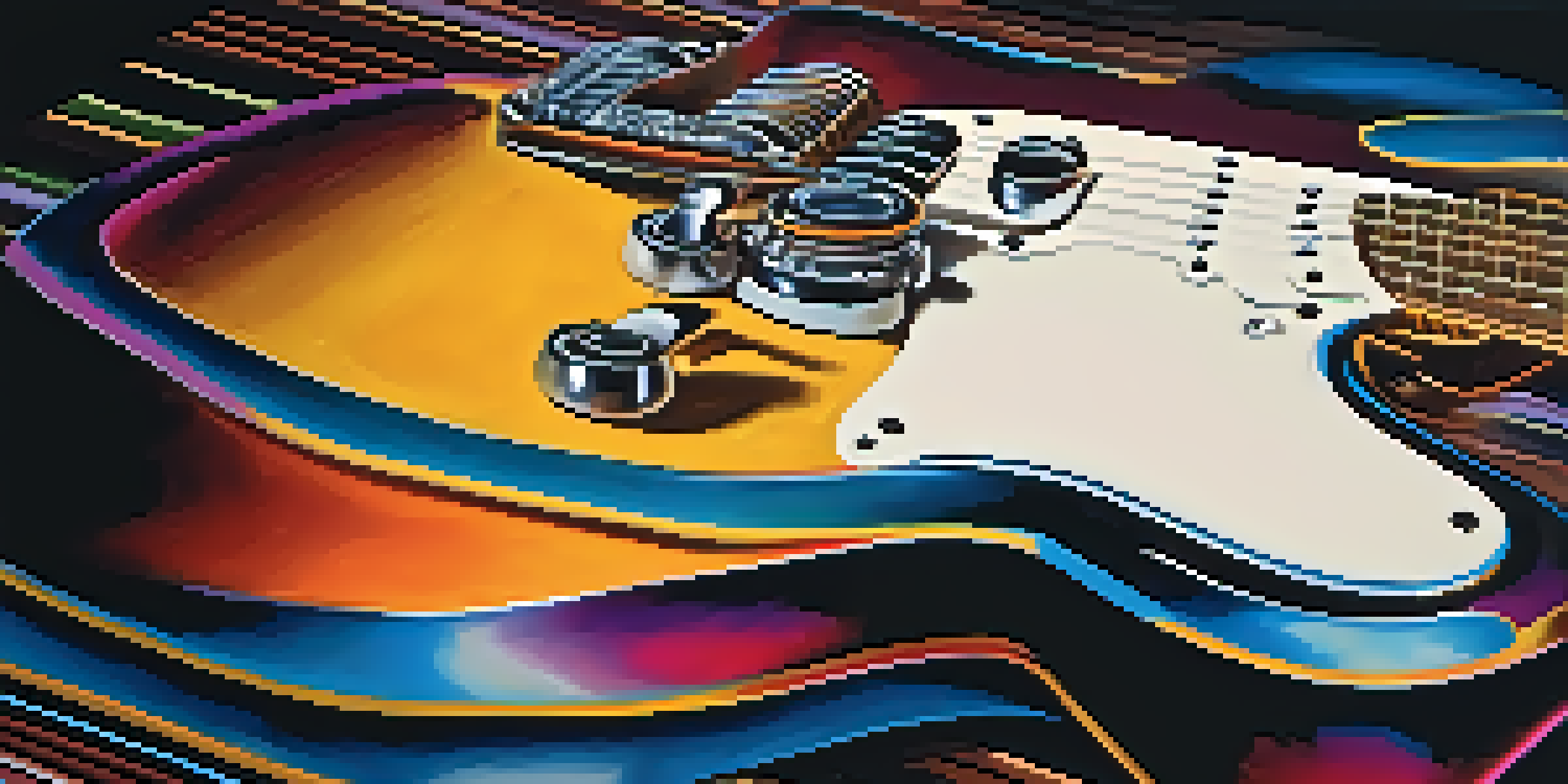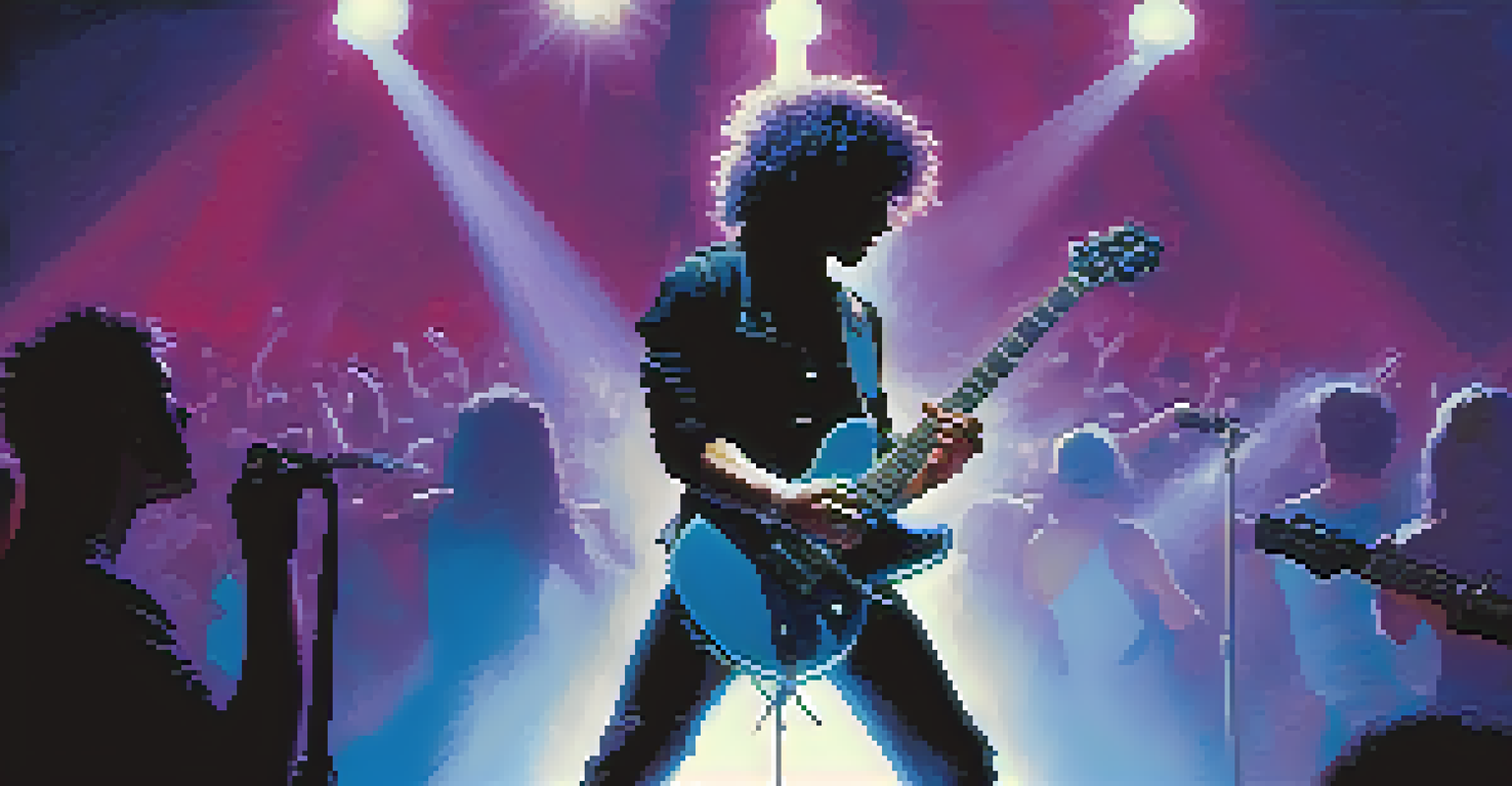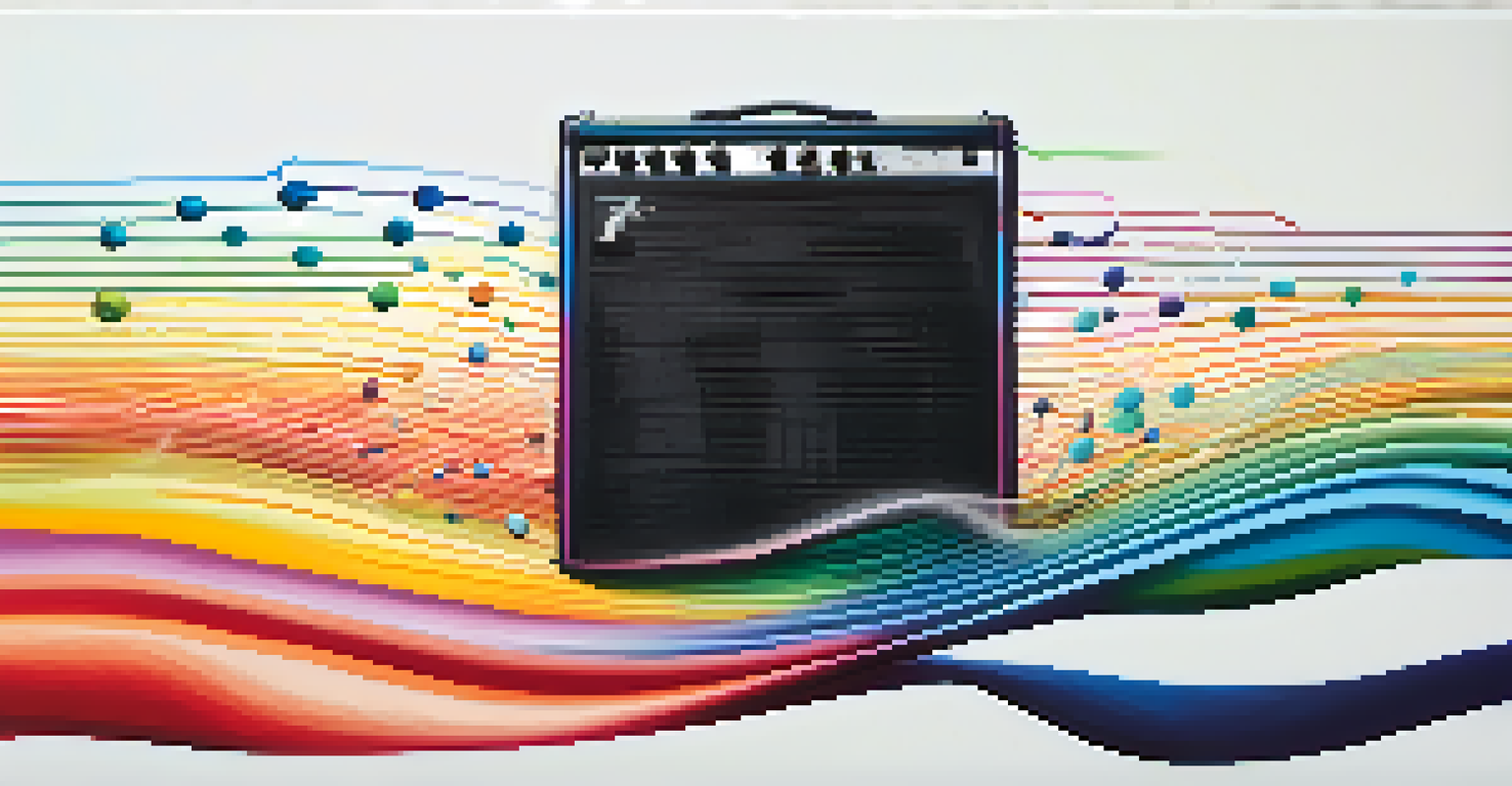Guitar Techniques That Define Metal Band Soundscapes

Power Chords: The Backbone of Metal Riffs
Power chords are the heart and soul of metal music, providing a strong, driving sound that defines the genre. These chords, typically played on the low E and A strings, create a rich, full tone that resonates with listeners. Bands like Metallica and Black Sabbath have masterfully used power chords to craft iconic riffs that remain influential today.
Music can change the world because it can change people.
Their simplicity allows for quick transitions and heavy distortion, making them perfect for the energetic style of metal. When played with palm muting, power chords can convey an aggressive sound that adds to the intensity of the music. It's this versatility that makes power chords a staple for every aspiring metal guitarist.
To effectively utilize power chords, practice transitioning between them smoothly while experimenting with different tempos. This will not only improve your technique but will also empower you to create your own unique riffs. Remember, a powerful riff often starts with a simple power chord!
Palm Muting: Adding Dynamics and Depth
Palm muting is a technique that involves resting the palm of your picking hand on the strings near the bridge of the guitar. This creates a muted, percussive sound that adds a layer of complexity to the music. In metal, palm muting is often used to create chugging rhythms that enhance the overall heaviness of a song.

Famous metal guitarists like Dimebag Darrell and Zakk Wylde have expertly employed this technique to deliver powerful riffs and solos. The contrast between muted and open notes creates a dynamic soundscape that keeps listeners engaged. By incorporating palm muting into your playing, you can add both rhythm and texture to your metal compositions.
Power Chords Drive Metal Riffs
Power chords form the foundation of metal music, allowing for quick transitions and heavy distortion that creates iconic riffs.
To master palm muting, start by practicing simple power chords while muting the strings. Gradually increase the speed and complexity of your riffs as you become more comfortable. With time, you'll find that palm muting becomes an essential tool in your metal guitar arsenal.
Tremolo Picking: The Fast and Furious Approach
Tremolo picking is a rapid alternate picking technique that produces a fast, continuous sound. This technique can be particularly effective in creating intensity and urgency in metal music. By maintaining a steady rhythm, guitarists can evoke a sense of chaos that perfectly complements the genre's themes.
The guitar is a fantastic instrument, but it can be even more fantastic if you know how to use it.
Many iconic metal bands, like Slayer and Children of Bodom, have used tremolo picking to create memorable melodies and aggressive riffs. The technique is especially prevalent in subgenres like black metal and death metal, where speed and precision are paramount. Incorporating tremolo picking into your playing can significantly enhance your musical expression and technique.
To practice tremolo picking, start with simple single notes on the higher strings before working your way down to more complex patterns. Focus on maintaining a consistent speed while ensuring your notes are clear and distinct. With practice, you'll be able to seamlessly integrate this technique into your metal repertoire.
Whammy Bar Tricks: Expressive Sound Manipulation
The whammy bar, or tremolo arm, offers guitarists a unique way to manipulate pitch and create expressive sounds. This tool can be used for subtle bends or dramatic dives, adding an extra layer of emotion to solos and riffs. Many metal guitarists, such as Steve Vai and Eddie Van Halen, are known for their creative use of the whammy bar, pushing the boundaries of sound.
Incorporating whammy bar tricks into your playing can make your solos stand out, giving them a distinct flair that captures the listener's attention. This technique can be especially effective in conveying feelings of tension and release, a common theme in metal music. Mastering the whammy bar can elevate your playing and help you express your musical ideas more fully.
Dynamic Techniques Enhance Sound
Techniques like palm muting, tremolo picking, and legato add depth and complexity to metal guitar playing.
To get started with the whammy bar, practice simple bends and dives to understand how it affects your notes. Experiment with different techniques, such as fluttering or harmonic squeals, to discover your unique sound. As you become more comfortable, you'll find that the whammy bar becomes an exciting addition to your playing style.
Sweep Picking: The Art of Fluid Arpeggios
Sweep picking is a technique that allows guitarists to play arpeggios seamlessly and quickly. By using a fluid motion with the pick, you can create cascading notes that sound incredibly impressive. This technique is widely used in metal, particularly in shred guitar, where speed and precision are essential.
Notable guitarists like Yngwie Malmsteen and Jason Becker have showcased the beauty of sweep picking in their solos, inspiring countless players to master this skill. The technique involves a combination of finger positioning and picking motion, which, when executed correctly, can create a smooth, flowing sound that captivates listeners. Perfecting sweep picking can open up new avenues for creativity in your playing.
To practice sweep picking, begin with simple three or four-string arpeggios, focusing on your picking motion. Gradually increase the complexity as you become more comfortable, ensuring that each note rings clear. With dedication and practice, you'll find that sweep picking adds a level of sophistication to your metal guitar skills.
Natural Harmonics: Creating Ethereal Tones
Natural harmonics are produced by lightly touching the string at specific points while plucking it, creating a bell-like tone. This technique can add an ethereal quality to metal music, contrasting beautifully with the heavier elements in the genre. Many bands, such as Tool and Opeth, have effectively used natural harmonics to create atmospheric soundscapes.
Incorporating natural harmonics into your playing can enhance the textural diversity of your music, making it more engaging for listeners. By strategically placing harmonics within your riffs and solos, you can create moments of tension and release that keep the audience captivated. This technique allows you to experiment with different sounds and textures, adding depth to your compositions.
Expressive Tools for Unique Sound
Using tools like the whammy bar and natural harmonics can create distinctive sounds that elevate your metal compositions.
To practice natural harmonics, start by finding the 5th, 7th, and 12th frets on your guitar. Lightly touch the string at these points while plucking to produce harmonics. With time and experimentation, you'll discover how to integrate this technique into your playing to craft unique and compelling soundscapes.
Legato Playing: Smooth Transitions and Fluidity
Legato playing involves using hammer-ons and pull-offs to create smooth, flowing passages without picking every note. This technique allows for increased speed and fluidity, making it a favorite among metal guitarists. Bands like Dream Theater and Symphony of Destruction have showcased the power of legato in their intricate solos and melodies.
Legato adds a unique texture to your playing, allowing you to connect notes in a way that feels natural and effortless. This technique can be especially effective in creating melodic lines that stand out amidst the heaviness of metal music. Mastering legato can help you craft solos that are both technically impressive and emotionally resonant.

To practice legato, start with simple scales, focusing on hammer-ons and pull-offs to create smooth transitions. Gradually increase the complexity of your phrases, ensuring each note is clear and distinct. With practice, you'll find that legato becomes an essential part of your metal guitar technique.